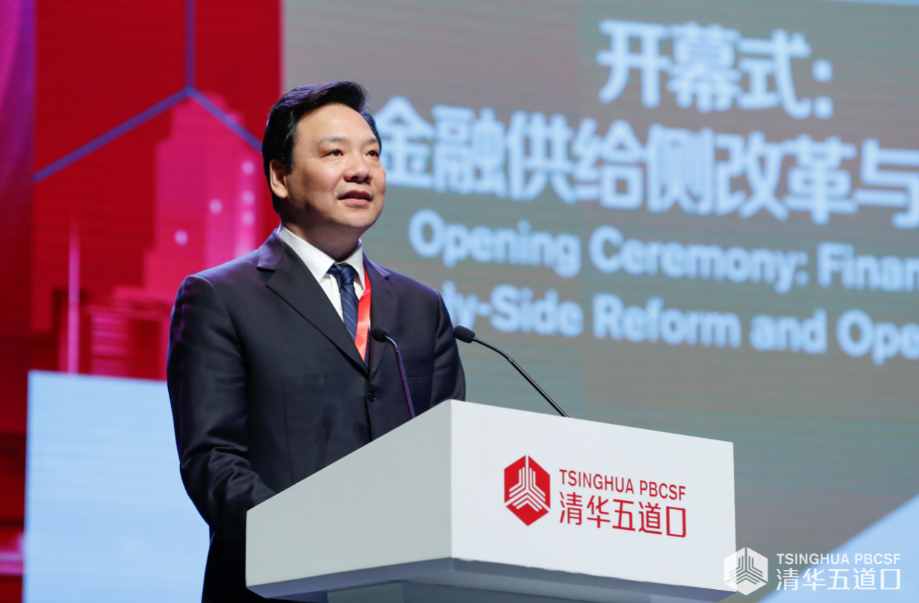
CHEN Yulu Deputy Governor, the People's Bank of China
Chen Yulu, Deputy Governor of the People’s Bank of China explained the role of the Chinese central bank in setting monetary policy and regulation in the supply-side reform of China’s continued opening up at Tsinghua PBCSF Global Finance Forum, 2019. This role is described as largely centered around guaranteeing stability of the financial system.
The PBC has focused on executing prudential macroeconomic policies which guarantees the supply of money with targets focused on ensuring “broad money” or M2 mirrors the growth of nominal Gross Domestic Product (GDP). This also allows the PBC to support areas of weak growth.
The PBC takes a model different from some western agencies such as the US Federal Reserve (FED), Chen explained. After the 2008 financial crises in the US, the FED intervened in the US market by purchasing assets to ensure liquidity in the market. In the Chinese context, the policy response to was to ensure 0 percent loss rate for banks to reduce risk and also 0 percent reserve rate to enhance liquidity. This policy encourages an expansionary credit environment for banks in the system.
Chen Yulu says that the response in the Chinese market is unique based on the Chinese market characters. The main traits of Chinese market is high deposit rate, significant corporate participation and increasing indirect financing.
To ensure stability and growth of the market there are several initiatives to encourage diversity and growth with the opening up process, Chen illustrated. In April 2019, Bloomberg included Chinese bonds in its index for the first time. This comes with the increasing need for securities regulation. While in the past banks have focused on efficiency, there is now a need to focus on inclusive financing for microenterprises offering products targeted at rural areas, green funding and small business loans.
These procedures will also require more sophisticated and targeted financial services products and mechanisms which will need monitoring and performance appraisals. Current estimates indicated and increase in small and medium sized businesses in the first quarter 2019 of 19.1 percent and growth in private funding of 6.7 percent in the first quarter 2019.
Chen summarized that the financial industry is supportive of greater opening up and reform with 12 new measures being introduced by the Chinese government in 2019. Continuing the reform and opening up will require a change in thinking from a positive list approach (where allowed activities are indicated) to a negative list approach (where only restricted activities are indicated) with appropriate regulations to guard against risk.